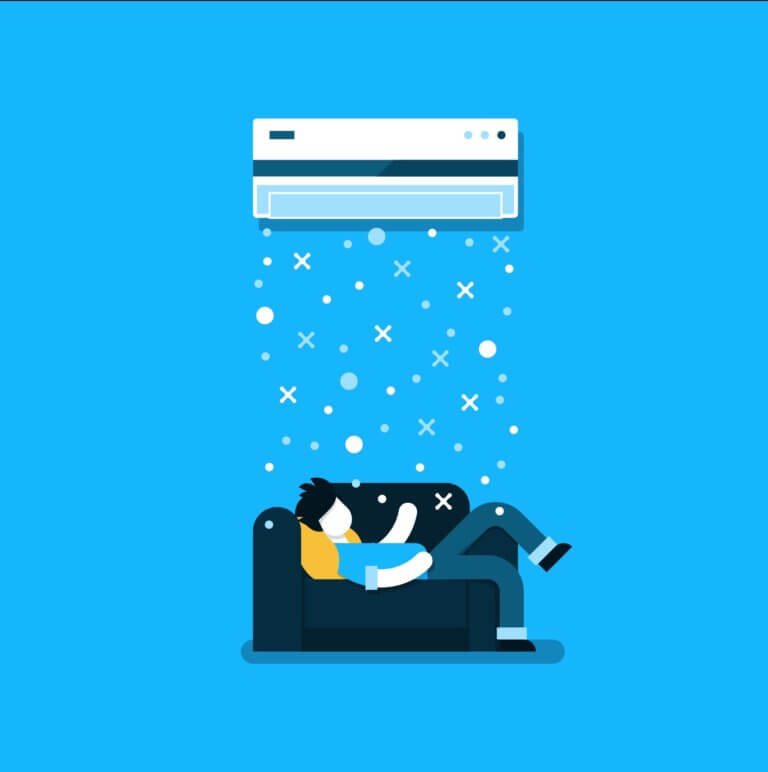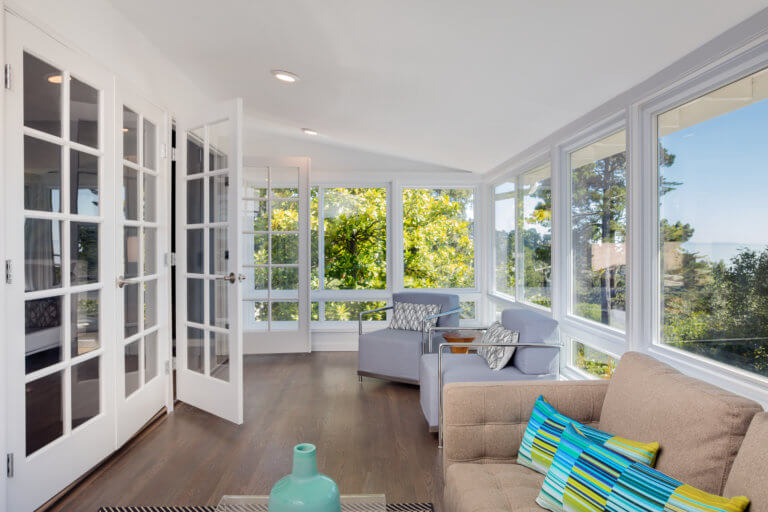According to the U.S. Department of Energy, over 2/3 of all homes in the United States have air conditioners, which comes with an annual cost of about $29 billion to homeowners.
No matter where you live in the country, there are HVAC services available to help conserve energy and reduce cost! One of those options is ductless air conditioning – also known as a mini-split system.
What Is Ductless Air Conditioning?
A ductless or mini-split air conditioning unit is just what it sounds like – it works like a regular central air conditioner but without the ducts.
The indoor unit blows warm air from your home over cold evaporator coils. The refrigerant running through these coils absorbs the heat from the air and brings it to the outside unit. Here, the refrigerant dumps all the heat it pulled from your home’s air.
How Does it Work?
In a regular split system air conditioner, the indoo+r unit typically lives in the attic or closet. The ducts carry air to this central location, where it can be cooled and returned back to your home through more ducts. In a mini-split system, the smaller indoor unit is actually in the room that it’s cooling.
Having an in-room unit eliminates the need for ducts. Instead, the warm air is simply pulled into the in-room unit and cold air is blown right back out. 
Can a ductless system cool or heat a whole home, though?
Yes! Multiple indoor units can connect to a single outdoor unit to provide AC and/or heating to your entire home. There are also a variety of types of mini-split systems, so you can choose the one that would look best in your unique home. Some types include:
- Ceiling mounted – An individual unit mounted where the wall and ceiling meet. This keeps the unit out of direct eye-line in most cases.
- Ceiling recessed – This type is built into the ceiling. It looks similar to a vent on your ceiling, but it’s larger.
- Floor mounted – An individual unit mounted where the wall and floorboards meet. While this may be more visible, the cool or warm air coming from the unit will be more noticeable than if mounted at the ceiling.
OK, So What Are the Pros of a Ductless System?
There are a variety of reasons a ductless or mini-split system can be beneficial in your home.
- Room-by-room temperature control– With these mini-split systems, you can have different units in different rooms or areas of your home. This allows you to control the temperature of each individual part of your home.

- No large drilling required – Ductless systems are commonly used in situations where a window AC unit or baseboard heating would be considered. However, unlike these, ductless systems are better because they only require a very small hole be drilled into the wall. This both looks better and makes them less vulnerable to air leakage and security problems.
- Exceedingly energy-efficient – ENERGY STAR estimates that the average home loses around 20-30% of the air that moves through the duct system because of leaks, holes, or poorly connected ducts. In addition, the ductless systems speed up or slow down based on the needs of the system, rather than shutting off completely like traditional HVAC compressors. These compressor start-ups consume a lot of energy. A ductless system could save you up to 30% on heating and cooling costs.
Great – What About Any Cons?
There are three commonly agreed upon cons of mini-split HVAC systems.
- Up-front cost – As mentioned, the energy and efficiency costs of ductless systems are lower than traditional HVAC systems. However, as a single-room solution, ductless units cost several times more than comparable window units or baseboard heating units. Or, if you’re looking to replace a current whole-house central heating/cooling with a ductless system, it’ll likely be more expensive than just replacing with another ducted unit. The energy bills will be lower in the long-run, but the initial replacement cost will be higher.
- Regular maintenance – Ideal maintenance on your mini-split system would be washing each unit’s filter monthly. Ductless fans can’t handle accumulating debris. If you ignore maintenance, a professional cleaning will be required, which can cost hundreds of dollars and possibly shorten your unit’s lifespan.
- Aesthetics – Ductless units aren’t made with interior design in mind. So some homeowners are hesitant to install them because they don’t match or add to the look of the room they’re going into. This is something to consider, however many homeowners say they don’t notice the unit once installed.
For homeowners in extremely cold environments, there is a fourth consideration – potentially needing to install a fuel-based backup for ductless heat. However, some newer models can handle the load, even if temperatures fall below zero.
When or Where Are Mini-Split Systems Ideal?
These ductless cooling and heating systems can make sense in a variety of situations or households. There are a few scenarios, though, where they have a clear advantage.
- New additions – For new additions to your house like bonus rooms, sun rooms, garage apartments, or the likes, ductless air conditioning and heating makes sense because the unit will be properly sized for the new space. And, it won’t steal air from other rooms or overload the old HVAC system.

- “Downsizing” without moving – Empty nesters or retirees, for example, who aren’t moving homes but don’t want to cool or heat rooms they aren’t using anymore. It makes more sense and is much safer to have a mini-split system in these scenarios, rather than simply closing the vents in those rooms.
- No one can agree on a temperature – Are you constantly cold, but your spouse or roommate is constantly hot? Are you always adjusting the thermostat behind each other’s backs? Enter: ductless systems! As mentioned, these allow you to control the temperature room-by-room, ensuring everyone has a say in how hot or cold it is in their space.

- Supporting rooms with specific cooling/heating issues – If you have a small bathroom with bright overhead lights, or a western-facing view with a giant window, odds are you have trouble keeping those spaces cool with the rest of the house. A mini-split system gives you the option to set those rooms to a lower temperature than the rest of the house, keeping them comfortable without freezing out the other rooms.
Take the Next Step:
Just the name “mini-split HVAC system” can be intimidating. But they are actually fairly simple, and offer a variety of potential benefits – from temperature control over individual rooms to lower waisted air and energy bills.
Call your local TemperaturePro today to learn more, or set up a consultation with our HVAC professionals!

